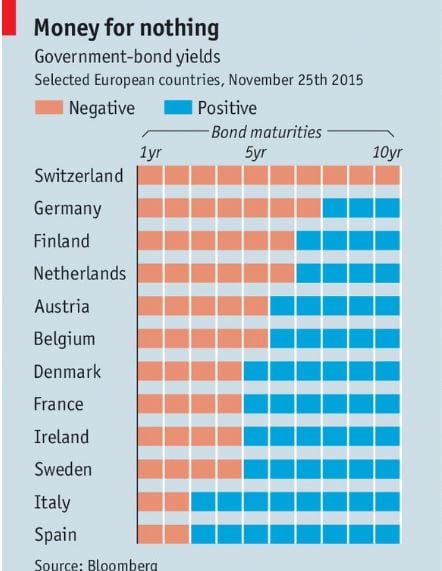How Central Bankers Echo the Russian Mob’s Playbook
Updated March 14, 2024
The venerable Greek philosopher Aristotle once mused the nature of ethics and the responsibility of individuals to the society in which they live. If Aristotle were to examine the contemporary financial landscape, he might draw parallels between central bankers’ actions and the Russian Mob’s operations. Both entities, in their ways, influence the masses through control and power, albeit with different methodologies.
Central Bankers: The Aristotelians of Wealth Redistribution?
Central bankers have long been the stewards of national economies, wielding tools like monetary policy to steer fiscal ships through the turbulent waters of global finance. Yet, their role has expanded, and their actions often mirror Aristotle’s musings about the distribution of wealth. This influence is particularly evident in how their policies disproportionately benefit the affluent, much like how the Russian Mob orchestrates its enterprises to enrich its hierarchy.
The practice of Quantitative Easing (QE), adopted by central banks, can be seen as a modern example of Aristotle’s ‘golden mean’ gone awry. Instead of achieving a balance, QE often tips the scales in favour of the asset-rich, reflecting the inherent inequities the philosopher cautioned against. The super-rich sees their portfolios swell, while the less fortunate find the value of their labour diminished, a scenario not unlike the power dynamics within the Russian Mob.
Mass Psychology and Inflation: The Russian Mob’s Shadow Economy
Adam Smith, with his invisible hand theory, suggested that self-interest in a free-market economy often results in beneficial societal outcomes. However, when central banks inadvertently create inflation through their expansionary policies, they disrupt this natural order, much like the Russian Mob’s manipulation of markets for illicit gain.
The masses, guided by the psychological impact of losing purchasing power, may turn to contrarian investing or technical analysis for stability—methods that the best investors of past centuries, like Benjamin Graham, would advocate for. Yet, this reaction plays into the hands of those who, like the Russian Mob, excel in capitalizing on market fears and uncertainty.
Boom and Bust: A Cycle of Economic Violence
The philosopher Friedrich Nietzsche’s ‘eternal recurrence’ concept posits that events repeat themselves over time. This notion eerily echoes in the boom and bust cycles catalyzed by central bankers. Their manipulation of interest rates can create economic bubbles, which, like the enterprises of the Russian Mob, build upon unsustainable foundations, only to collapse with devastating consequences.
J.P. Morgan, hailing from the Gilded Age of industry and finance, understood the perils of such cycles. He knew that actual value and stability come from sound investments, not an inflated market’s artificial highs. The Russian Mob, on the other hand, thrives on such distortions, much like central bankers unintentionally do through their policies.
Fiscal Discipline: A Lost Art
Mark Carney’s criticism reflects a lack of fiscal discipline reminiscent of the operations within the Russian Mob. The latter’s notorious reputation for short-term gains and disregard for societal impact finds a strange bedfellow in the central bankers’ policies, which often neglect long-term fiscal health.
The influential economist John Maynard Keynes might argue that central bankers have strayed from the path of managed economies, venturing into a realm where their actions resemble the capricious nature of the Russian Mob’s economic interventions.
Conclusion: A Reflection of Society’s Paradoxes
As Archibald MacLeish aptly noted, life’s absurdities are lived out in authentic scenarios. The comparison between central bankers and the Russian Mob might seem exaggerated, yet it reveals a profound truth about our global financial system. Both entities, in their pursuit of control and influence, affect the lives of countless individuals. The critical difference lies in their motives and the visibility of their actions.
The Russian Mob intrigues through a blend of old and new tactics, while the veneer of governance and policy sanctions central bankers’ methods. However, when these tactics lead to societal harm and instability, regardless of the actor, it is a cue for the informed to step back and question the course of our collective financial destiny.
Let’s add a bit of historical context to this topic so you can see how the Fed and central bankers, in general, take advantage of the working poor.
Hardships mounting
Hardships are on the rise, with 76% of families living from paycheck to paycheck. According to CBS, this phenomenon affects even 33% of families earning $75,000 per year; it’s not limited to just the so-called working poor. While the official unemployment rate is below 5%, the unofficial rate is close to 23%, as per shadow stats.
We find ourselves amid a full-blown currency war as one nation after another joins the negative interest rate trend. Swiss National Bank President Thomas Jordan confirms that damaging interest rate conflicts are here to stay, stating, “Our monetary policy is clear. It is based on negative interest rates and the willingness to intervene in the currency market if necessary.”

The image above vividly illustrates numerous European nations’ rapid adoption of negative interest rates, hinting at its impending spread to North America and Asia.
The driving force behind these market trends is rooted in the collective mindset of the masses, who have strong faith in the Federal Reserve and the government’s ability to tackle their challenges. As long as this sentiment remains unchanged, the current state of affairs will persist, and the outlook is poised to worsen.
How To Deal With The New Russian Mob (AKA The Fed)
If you wish to engage in speculation, it’s crucial to comprehend how financial markets function and what influences them. The primary driving force behind market movements is emotions, often referred to as Mass Psychology. Understanding this aspect can provide insights into market operations, eliminating the need to rely on individuals on Wall Street who present themselves as experts.
Here is a list of blue-chip stocks or stocks exhibiting robust growth rates. Two key metrics are strong quarterly earnings growth rates and solid quarterly revenue growth rates. Some companies include NTAP, QCOM, WMT, HD, AAPL AMZN, etc
How will Gold fare in a hostile interest environment?
Conventional wisdom states that precious metals trend upward when rates are rising. We live in strange times, and central bankers are breaking the left, right and centre rules, so this old paradigm might not hold. If the masses were forced to speculate, they could decide that gold is a better storage of wealth. However, for that to pass, the average Joe would have to understand the real meaning of the word inflation and that Gold is a currency, not some ancient relic that has no place in the 21st century.
This will not be an easy feat, so while we expect Gold to trend higher in future years, the next bull run will not begin with a bang.
How does one become a butterfly?” she asked pensively. ”You must want to fly so much that you are willing to give up being a caterpillar.”
Trina Paulus
More Reads
Market Timing Strategies: Debunking Flawless Predictions
How to boost your immune system: Simple Ideas
Buy When There’s Blood in the Streets: Adapt or Die
Financial Insights: Cutting Through the Noise



